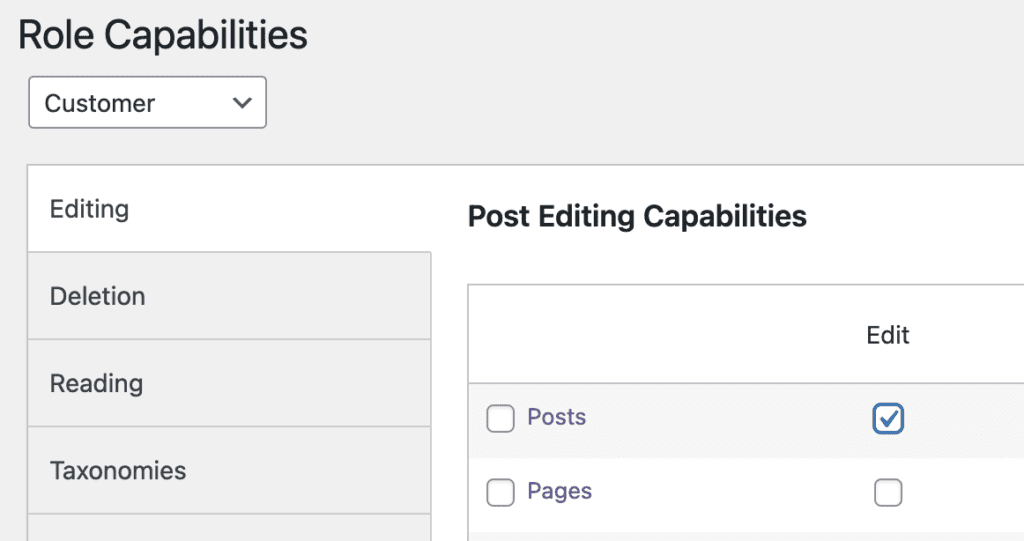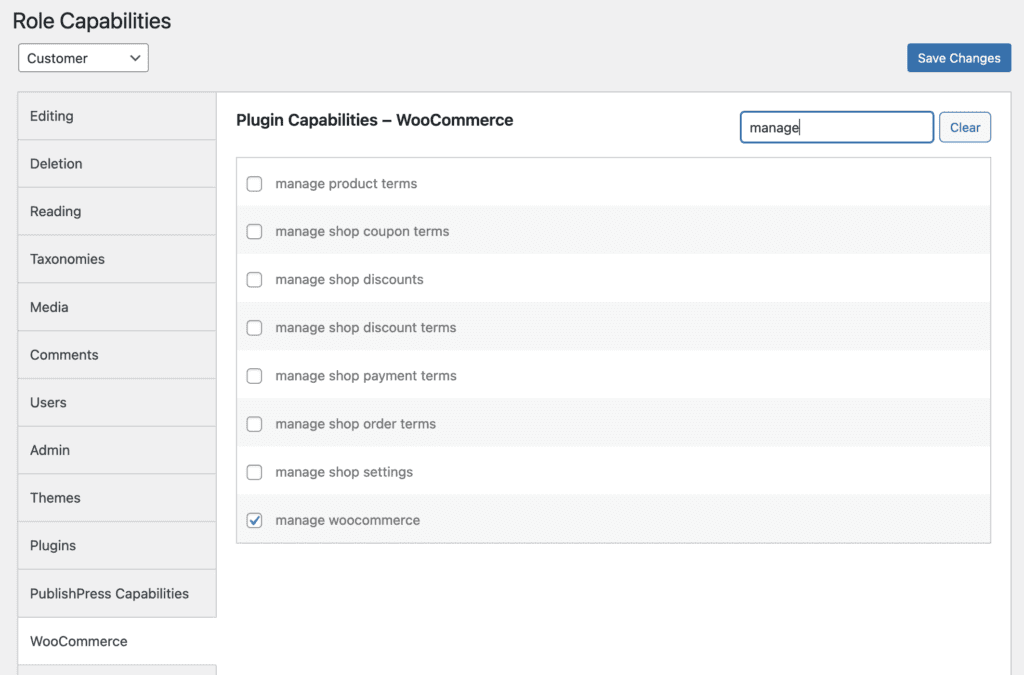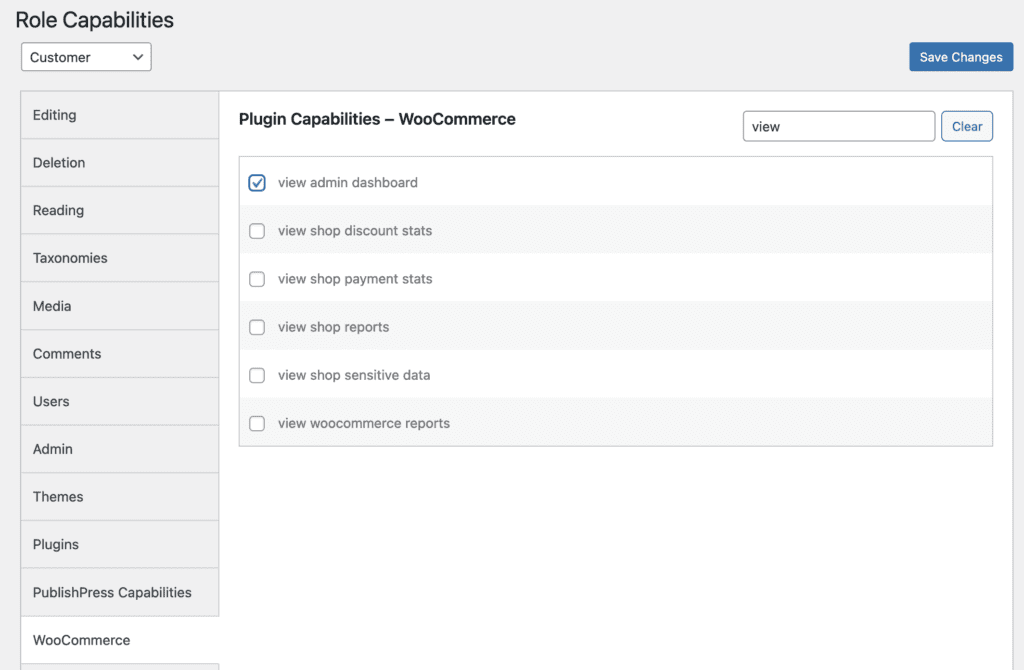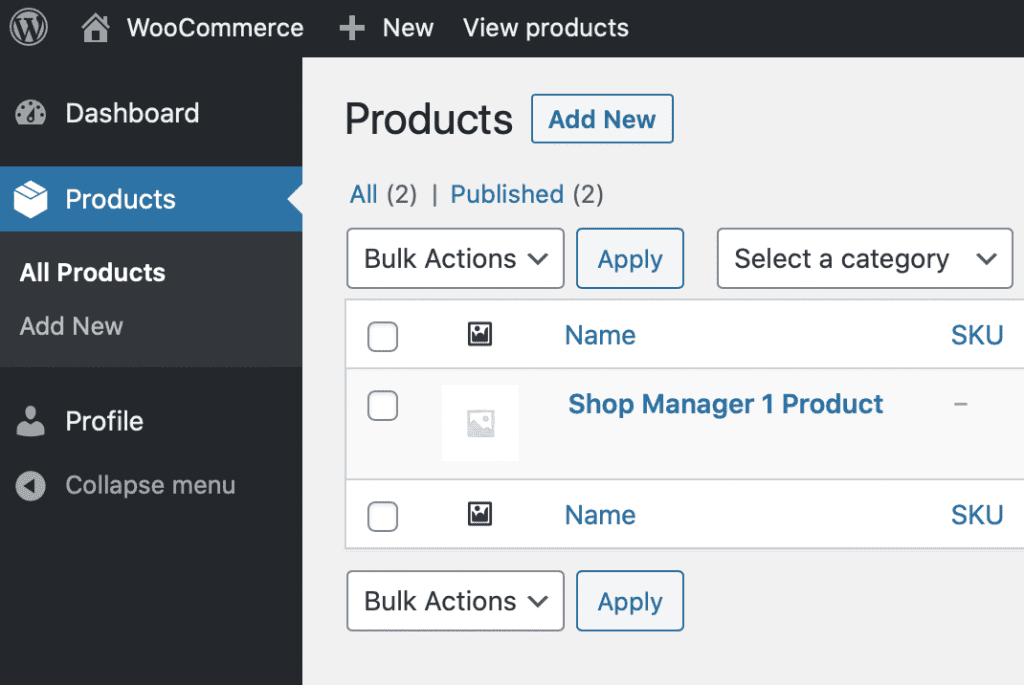The PublishPress Capabilities plugin is one of the most popular ways to control permissions for WooCommerce. The PublishPress Capabilities plugin is particularly needed because WooCommerce admin access can be confusing. Several PublishPress Capabilities users have asked us about access to the WordPress admin area. Any user in the WooCommerce Customer role automatically loses access to the admin area.
This is because WooCommerce automatically blocks access to users who do not have one of these three permissions:
- edit_posts
- manage_woocommerce
- view_admin_dashboard
Why does WooCommerce do this? I think it is to avoid distracting customers. The customers on your WooCommerce site do not need to see the admin dashboard or the WordPress toolbar.
The first two permissions on this list (edit_posts and manage_woocommerce) are powerful permissions and give access to large areas of the WordPress and WooCommerce dashboard.
So if WooCommerce is blocking your users, you can use PublishPress Capabilities to give them those permissions.
This image shows how you give the edit_posts permission thanks to the PublishPress Capabilities plugin.
- Go to the “Capabilities” link in your WordPress admin menu.
- Check the box in the “Edit” column and “Posts” row.

This image shows how you give the manage_woocommerce permission.
- Go to the “Capabilities” link in your WordPress admin menu.
- Click “WooCommerce” in the sidebar and search for “manage”.
- Check the “manage woocommerce” box.

Finally, there is a third option to grant WooCommerce admin access and this is probably the best choice for most sites.
- Click “WooCommerce” in the sidebar and search for “view”.
- Select the “view admin dashboard” box.

I believe that view_admin_dashboard is a good choice for WooComemrce admin access because it is very limited compared to the other options. All it does is allow users access to the WordPress dashboard. Here is a screenshot of a user who has view_admin_dashboard plus also the ability to manage WooCommerce products:

